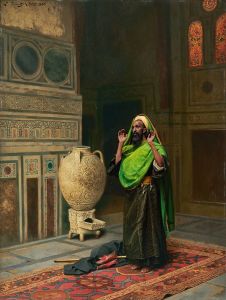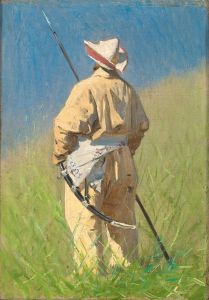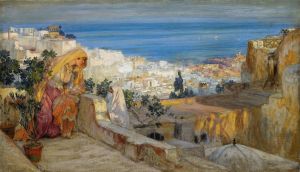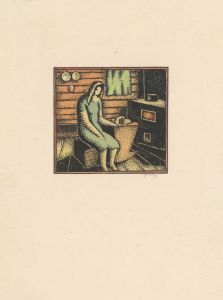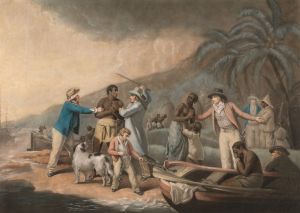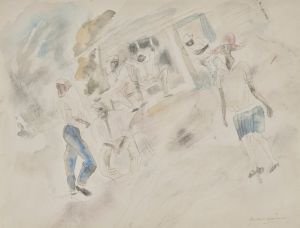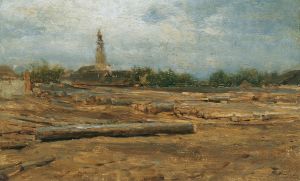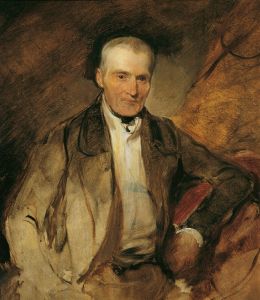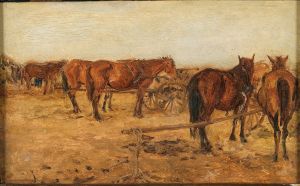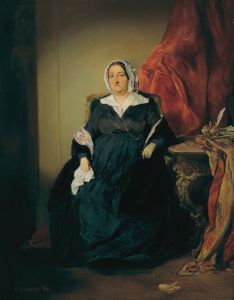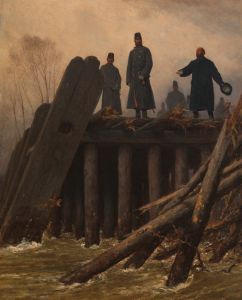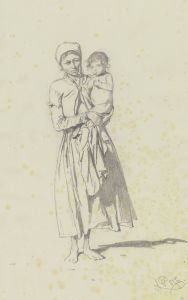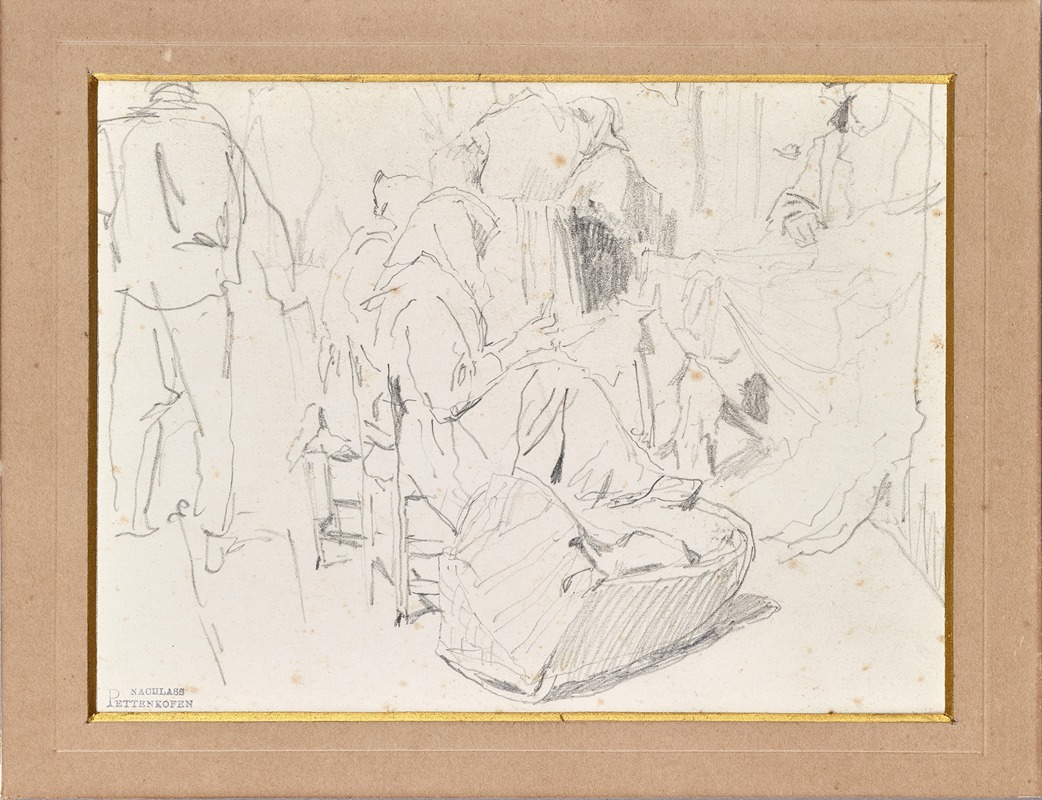
Frauen mit Kopftüchern und Wiege Studie
A hand-painted replica of August von Pettenkofen’s masterpiece Frauen mit Kopftüchern und Wiege Studie, meticulously crafted by professional artists to capture the true essence of the original. Each piece is created with museum-quality canvas and rare mineral pigments, carefully painted by experienced artists with delicate brushstrokes and rich, layered colors to perfectly recreate the texture of the original artwork. Unlike machine-printed reproductions, this hand-painted version brings the painting to life, infused with the artist’s emotions and skill in every stroke. Whether for personal collection or home decoration, it instantly elevates the artistic atmosphere of any space.
August von Pettenkofen, an Austrian painter born in 1822 and died in 1889, is known for his genre scenes and depictions of rural life. One of his notable works is "Frauen mit Kopftüchern und Wiege Studie" (Women with Headscarves and Cradle Study). This painting exemplifies Pettenkofen's interest in capturing the everyday lives of people, particularly those in rural settings.
Pettenkofen's artistic career began with formal training at the Academy of Fine Arts in Vienna, where he was influenced by the Biedermeier style, which emphasized detailed and realistic portrayals of domestic and rural life. His early works often depicted military scenes, reflecting his experiences during the Hungarian Revolution of 1848. However, he later shifted his focus to genre painting, which allowed him to explore the subtleties of human interaction and the quiet dignity of rural existence.
"Frauen mit Kopftüchern und Wiege Studie" is a study piece, meaning it was likely created as a preparatory work for a larger, more finished painting. This type of study allowed Pettenkofen to experiment with composition, light, and color before committing to a final version. The painting features women wearing headscarves, a common sight in rural European communities, indicating their modesty and traditional values. The inclusion of a cradle suggests a domestic scene, emphasizing themes of motherhood and family life.
Pettenkofen's use of light and shadow in this study is noteworthy. He often employed a muted color palette, which lent a sense of realism and intimacy to his scenes. The careful attention to detail in the women's clothing and the cradle reflects his commitment to accurately portraying the textures and materials of rural life. This attention to detail helps to create a vivid and authentic representation of the subjects.
Throughout his career, Pettenkofen traveled extensively, particularly in Hungary and Slovakia, where he found much of his inspiration. His works often depict the landscapes and people of these regions, capturing the unique cultural and social aspects of rural life. "Frauen mit Kopftüchern und Wiege Studie" is consistent with this focus, offering a glimpse into the daily lives of rural women.
Pettenkofen's contributions to genre painting were significant, as he brought a level of empathy and respect to his subjects that was not always present in the works of his contemporaries. His ability to convey the quiet dignity and resilience of rural people earned him recognition and respect in the art world.
In summary, "Frauen mit Kopftüchern und Wiege Studie" by August von Pettenkofen is a study piece that reflects the artist's dedication to capturing the essence of rural life. Through his careful attention to detail and use of light and shadow, Pettenkofen creates an intimate and realistic portrayal of women in a domestic setting, highlighting themes of motherhood and tradition. His work remains an important part of the genre painting tradition, offering valuable insights into the lives of rural communities in the 19th century.





